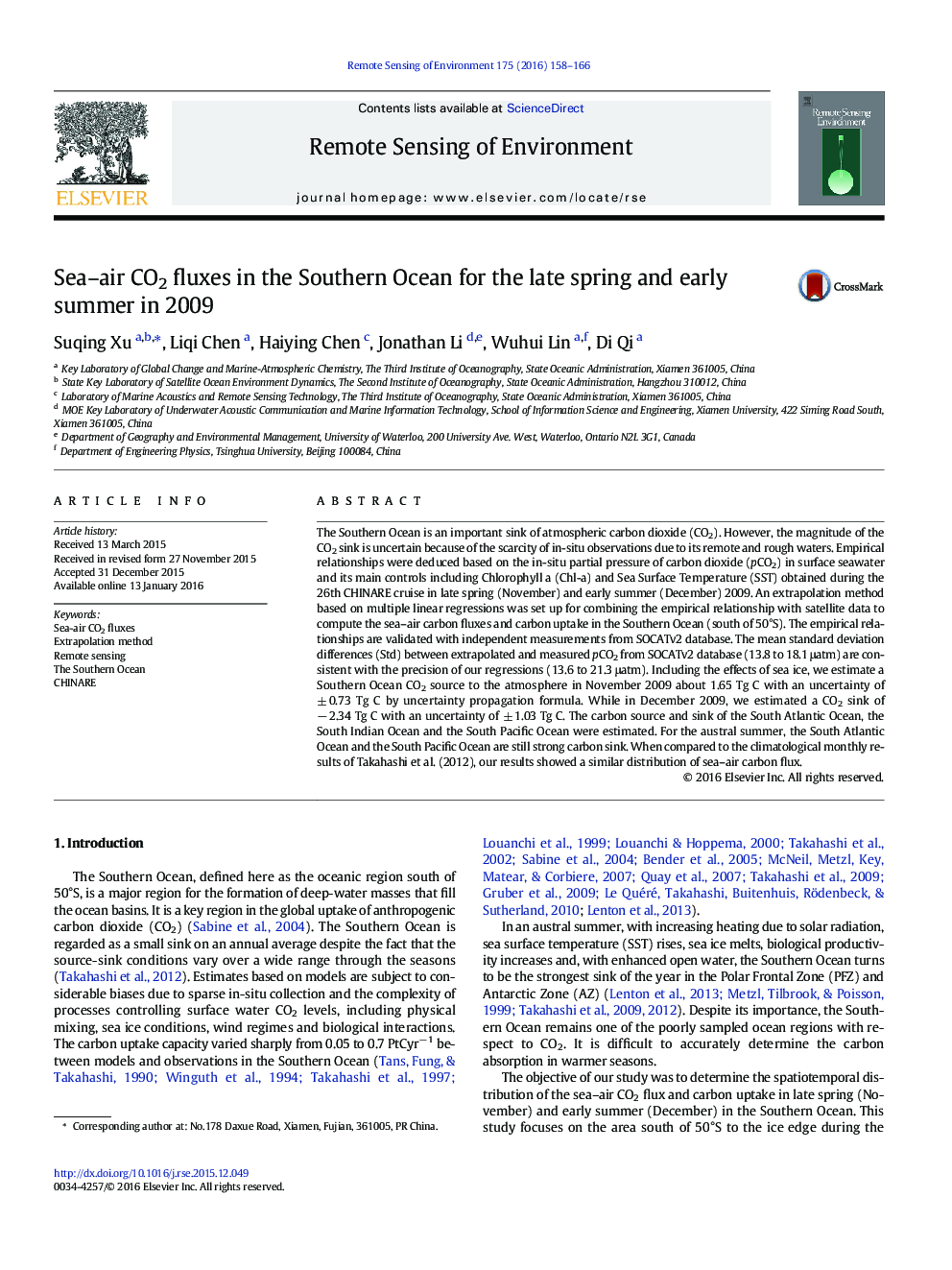| کد مقاله | کد نشریه | سال انتشار | مقاله انگلیسی | نسخه تمام متن |
|---|---|---|---|---|
| 6345615 | 1621225 | 2016 | 9 صفحه PDF | دانلود رایگان |

- We use MLR extrapolation method to compute sea-air CO2 flux by in-situ and R.S. data.
- We calculate the CO2 uptake of the Southern Ocean from data from the 26th CHINARE cruise.
- We do the comparisons of carbon uptake among three ocean sectors in the Southern Ocean.
- The South Indian and the South Pacific Ocean are strong carbon sinks in austral summer.
The Southern Ocean is an important sink of atmospheric carbon dioxide (CO2). However, the magnitude of the CO2 sink is uncertain because of the scarcity of in-situ observations due to its remote and rough waters. Empirical relationships were deduced based on the in-situ partial pressure of carbon dioxide (pCO2) in surface seawater and its main controls including Chlorophyll a (Chl-a) and Sea Surface Temperature (SST) obtained during the 26th CHINARE cruise in late spring (November) and early summer (December) 2009. An extrapolation method based on multiple linear regressions was set up for combining the empirical relationship with satellite data to compute the sea-air carbon fluxes and carbon uptake in the Southern Ocean (south of 50°S). The empirical relationships are validated with independent measurements from SOCATv2 database. The mean standard deviation differences (Std) between extrapolated and measured pCO2 from SOCATv2 database (13.8 to 18.1 μatm) are consistent with the precision of our regressions (13.6 to 21.3 μatm). Including the effects of sea ice, we estimate a Southern Ocean CO2 source to the atmosphere in November 2009 about 1.65 Tg C with an uncertainty of ± 0.73 Tg C by uncertainty propagation formula. While in December 2009, we estimated a CO2 sink of â 2.34 Tg C with an uncertainty of ± 1.03 Tg C. The carbon source and sink of the South Atlantic Ocean, the South Indian Ocean and the South Pacific Ocean were estimated. For the austral summer, the South Atlantic Ocean and the South Pacific Ocean are still strong carbon sink. When compared to the climatological monthly results of Takahashi et al. (2012), our results showed a similar distribution of sea-air carbon flux.
Journal: Remote Sensing of Environment - Volume 175, 15 March 2016, Pages 158-166